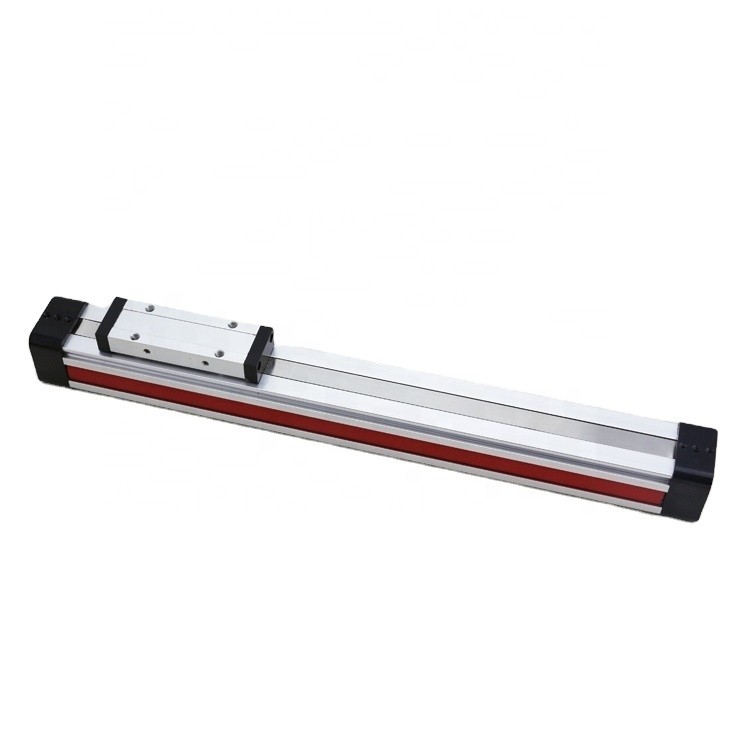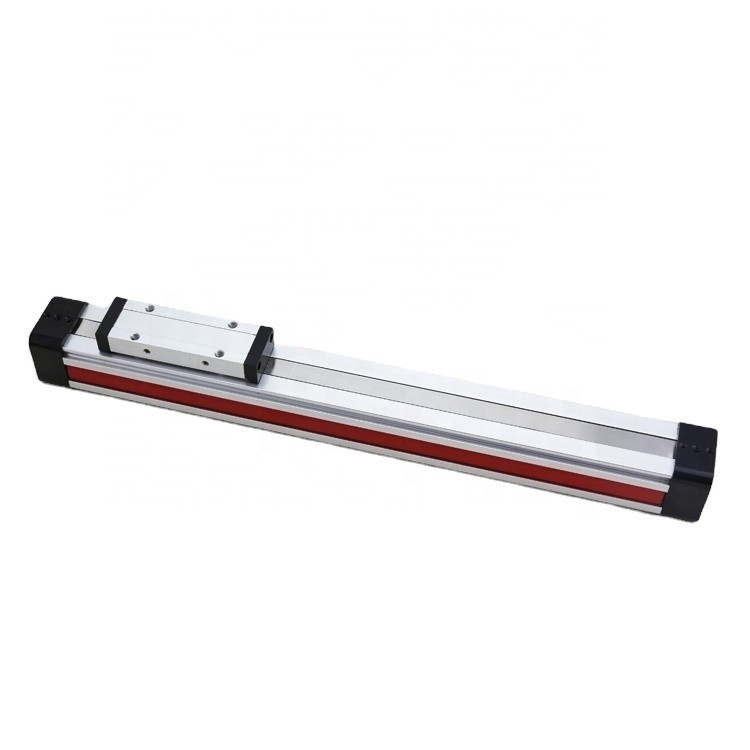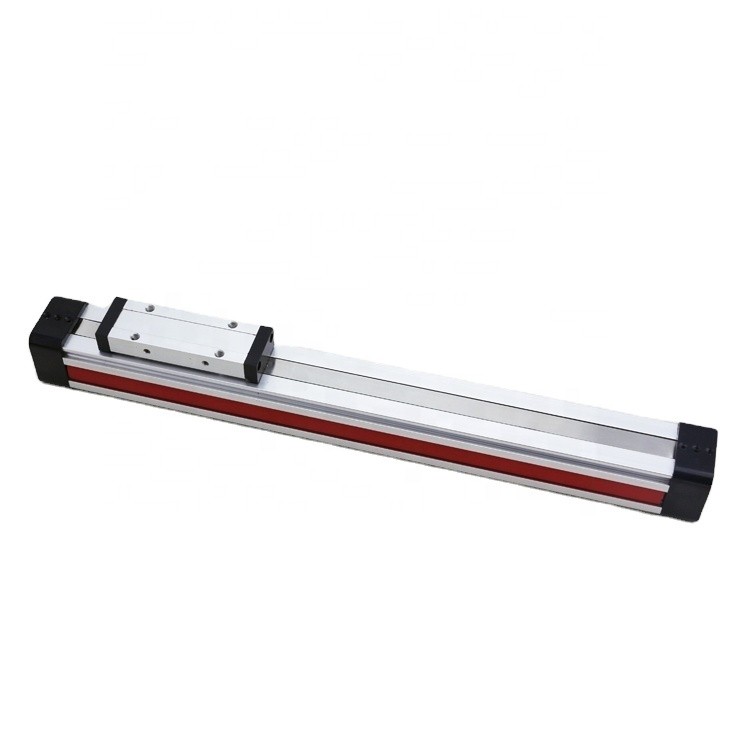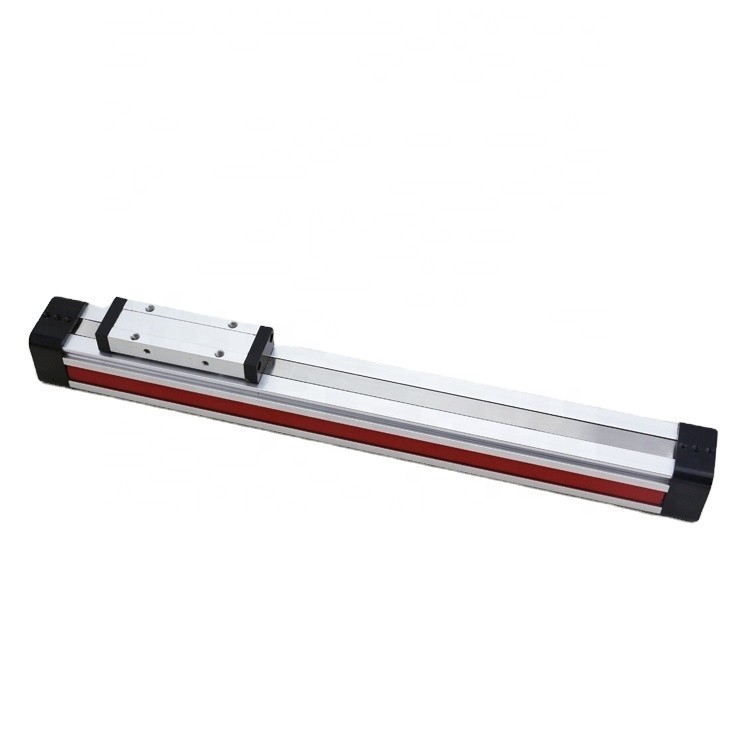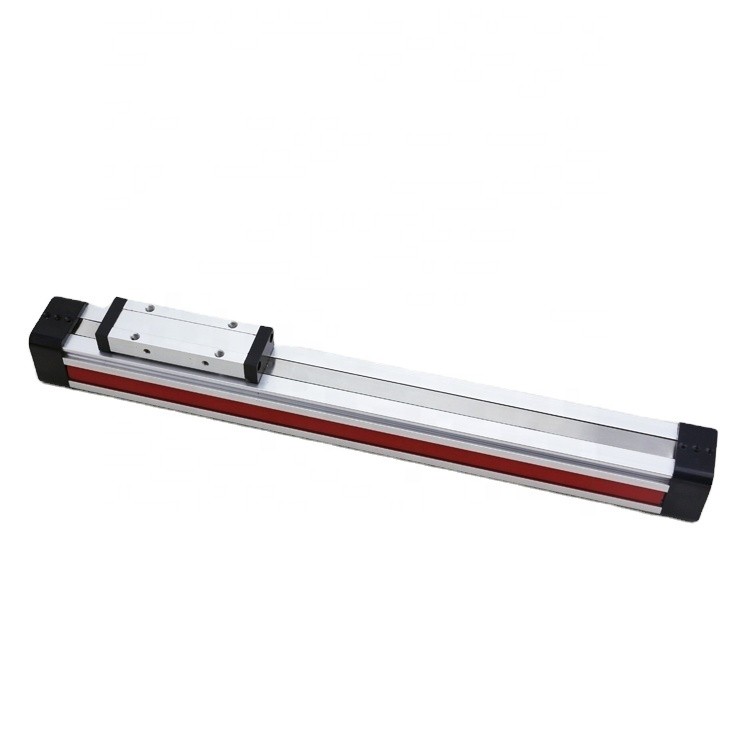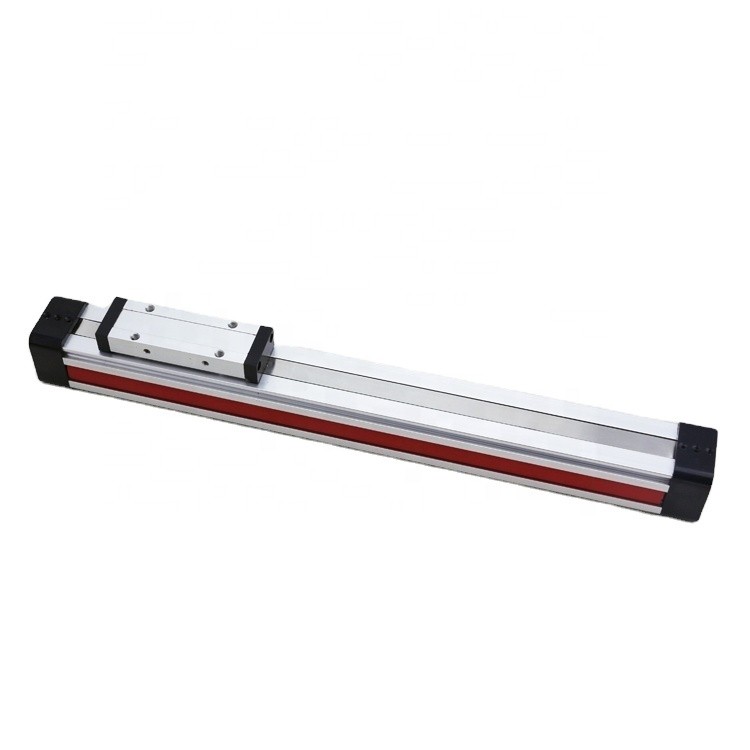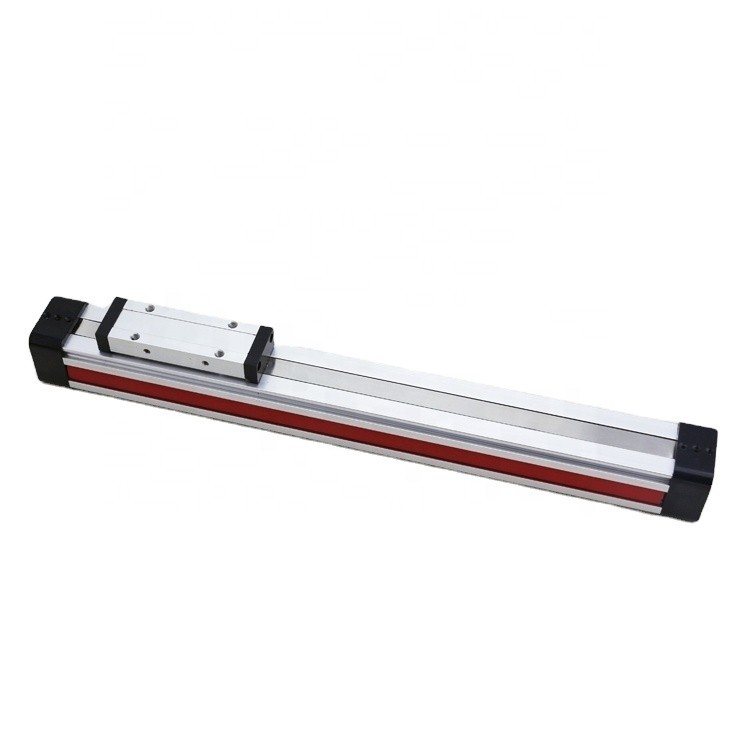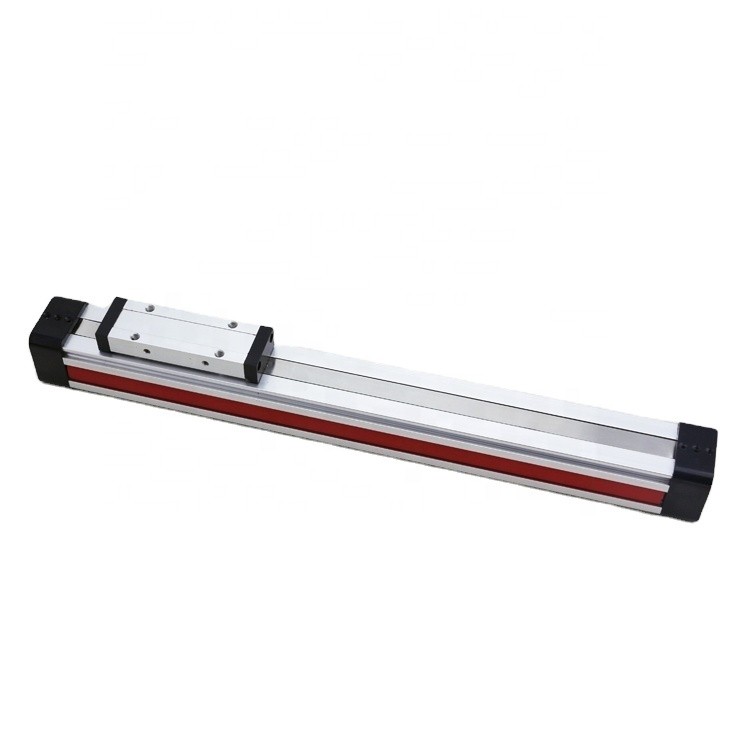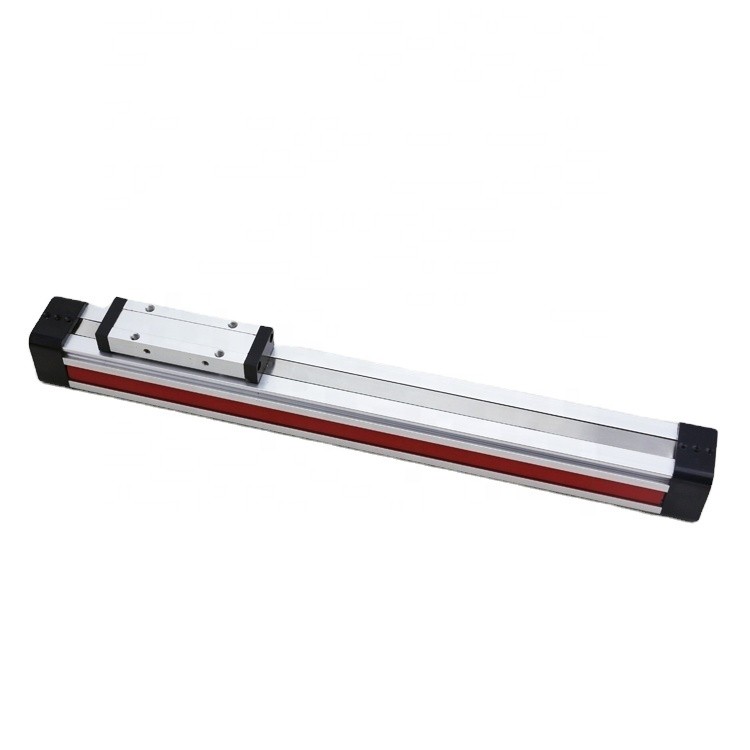Rodless Cylinder
Compact Air Cylinders Manufacturers and Suppliers
RIH, or Yueqing Right Pneumatic Co., Ltd, is your trusted partner when it comes to supplying Rodless Air Slide systems. Interested in upgrading your pneumatic systems with our Rodless Air Slide? Reach out today to discuss requirements, quotes, and how we can tailor our solutions to meet your specific industry needs, be it textile, chemical, mineral, electric power, or papermaking.
Rodless Pneumatic Air Cylinders
Rodless pneumatic air cylinders distinguish themselves through a unique design that foregoes the use of a traditional piston rod. Instead, these cylinders employ a carriage to support and guide the load directly, thus optimizing space and enhancing efficiency. Here, we carve the features and benefits offered by RIH in this realm:
Features
- Compact Design: Saves space and allows for a longer stroke length compared to traditional cylinders with rods.
- Versatility: Suitable for a variety of applications, including those demanding complex multi-positioning systems.
- Direct Load Support: The carriage facilitates a direct link to the load, ensuring greater stability and uniform force distribution.
Benefits
- High-Speed Operation: Facilitates faster operational speeds, thus increasing productivity levels.
- Maintenance Friendly: Designed with ease of maintenance in mind, thereby promising longer operational lifespans.
- Precision: Ensures precise linear movements, playing a critical role in automation equipment.
Rodless cylinder types
Mechanically Jointed Cylinders
These cylinders feature a mechanical connection between the piston and the external slider. They are known for:
- Precision: Excellent for applications requiring high precision.
- Speed: Capable of high-speed operations while maintaining stability.
Magnetically Coupled Cylinders
These cylinders function through a magnetic coupling between the piston and the carriage. They bring the following advantages:
- Seal: They have a sealed chamber that prevents leakages, maintaining a cleaner operation.
- Flexibility: Suitable for applications requiring flexible and smooth operations with consistent speeds.
Cable-Type Cylinders
In these cylinders, a cable connects the piston and the carriage, navigating through pulleys. They stand out for:
- Cost-Efficiency: Generally, a more economical solution compared to other types.
- Installation: Allows for more flexible installation options owing to its design.
How does a rodless air cylinder work?
Rodless air cylinders showcase a distinct working mechanism compared to traditional cylinders with rods. Here is how they work:
1. Construction
These cylinders consist of a barrel and a piston, which moves within the barrel, and a carriage that moves along the outside of the barrel. The carriage is connected to the piston through various methods such as mechanical joints, magnets, or cables.
2. Initiation
The process begins with compressed air being introduced into the cylinder through a port. This compressed air acts on the piston, creating a force that drives the piston along the length of the cylinder.
3. Piston and Carriage Movement
As the piston moves, it drives the carriage along with it. This is achieved through the coupling mechanism (mechanical, magnetic, or cable) that connects the piston to the carriage. The synchronization between the piston and carriage movements facilitates a smooth linear motion.
4. Control of Movement
The movement can be controlled with great precision through the regulation of air pressure, enabling accurate positioning and smooth acceleration and deceleration profiles.
5. Exhaust
After reaching its end position, the air is exhausted from the cylinder through another port, and the cycle can be reversed to return the piston and carriage to their original positions.
Applications of Rodless Air Slide
The working principle of rodless cylinders makes them a prime choice in applications where space is a premium and long strokes are required, including:
- Automation systems
- Material handling systems
- Packaging machines
Load consideration
1. Load Magnitude
- Direct Load: The total weight of the load that the cylinder will move.
- Added Load: Considering the weight of any additional components attached to the carriage.
2. Load Distribution
Understanding how the load is distributed is vital to ensure even force distribution and prevent undue stress on the cylinder components.
- Symmetrical: Ensuring that the load is evenly distributed to avoid tilting or imbalances.
- Center of Gravity: The load's center of gravity should be as close as possible to the cylinder’s centerline.
3. Load Dynamics
- Acceleration and Deceleration: A keen eye on the forces generated during the start and stop of the movement is essential.
- Impact Loads: Accounting for any loads applied suddenly or impact forces during the operation.
4. Load Orientation
The manner in which the load is oriented with respect to the cylinder plays a significant role in the cylinder's operation and lifespan.
- Vertical Load: In the cases where the load movement is vertical, considering the effects of gravity is crucial.
- Horizontal Load: Here, the friction and guiding play a more pronounced role.
5. External Forces
- Forces: Accounting for forces like wind resistance or friction from other machinery parts.
- Temperature: Considering the operating temperature and how it might influence the load dynamics.
Advantages of a rodless cylinder
Understanding the working mechanism also brings to light the potential advantages of rodless air cylinders, such as:
- Space Efficiency: They occupy less space compared to rod-type cylinders for the same stroke length.
- Load Carrying Capacity: Direct load carrying ability ensures higher efficiency and stability.
Applications
The working principle of rodless cylinders makes them a prime choice in applications where space is a premium and long strokes are required, including:
- Automation systems
- Material handling systems
- Packaging machines
Selection criteria
1. Application Requirements
Understanding the specific demands of your application is the first step in selecting the right cylinder.
- Operating Environment: Consider the conditions where the cylinder will operate — temperature ranges, exposure to chemicals, and cleanliness requirements.
- Cycle Rate: Determine the number of cycles the cylinder will perform in a specified timeframe.
2. Load Characteristics
As discussed earlier, the nature of the load that the cylinder will handle is a crucial factor.
- Weight: The total weight of the load that the cylinder needs to move.
- Orientation: Whether the load is to be moved vertically, horizontally, or at any other angle, affecting the choice of cylinder.
3. Performance Requirements
Determining the performance metrics the cylinder must meet is vital.
- Speed: The velocity at which the load needs to be moved.
- Stroke Length: The total distance the piston needs to travel.
- Accuracy and Precision: The exactness of the load positioning that is required in your application.
4. Mounting Preferences
The mounting of the cylinder in your machinery impacts its performance.
- Space Consideration: The amount of space available for installing the cylinder.
- Alignment: Ensuring proper alignment to prevent side loads and ensure smooth operation.
5. Auxiliary Requirements
Consider any auxiliary elements that might be necessary for your application.
- Sensors: Integration with sensors for feedback and control.
- Cushioning: To control the end of stroke and prevent impact damages.
How do you calculate air cylinder force?
In pneumatic systems, the force exerted by a cylinder is a product of the air pressure and the cross-sectional area of the cylinder. The formula to calculate the force (F) is given by: F=P×A
Where:
- F is the force exerted by the cylinder, measured in Newtons (N)
- P is the air pressure supplied to the cylinder, measured in Pascals (Pa)
- A is the cross-sectional area of the cylinder’s piston, measured in square meters (m²). It can be calculated using the formula A=π×r2, where r is the radius of the piston.


